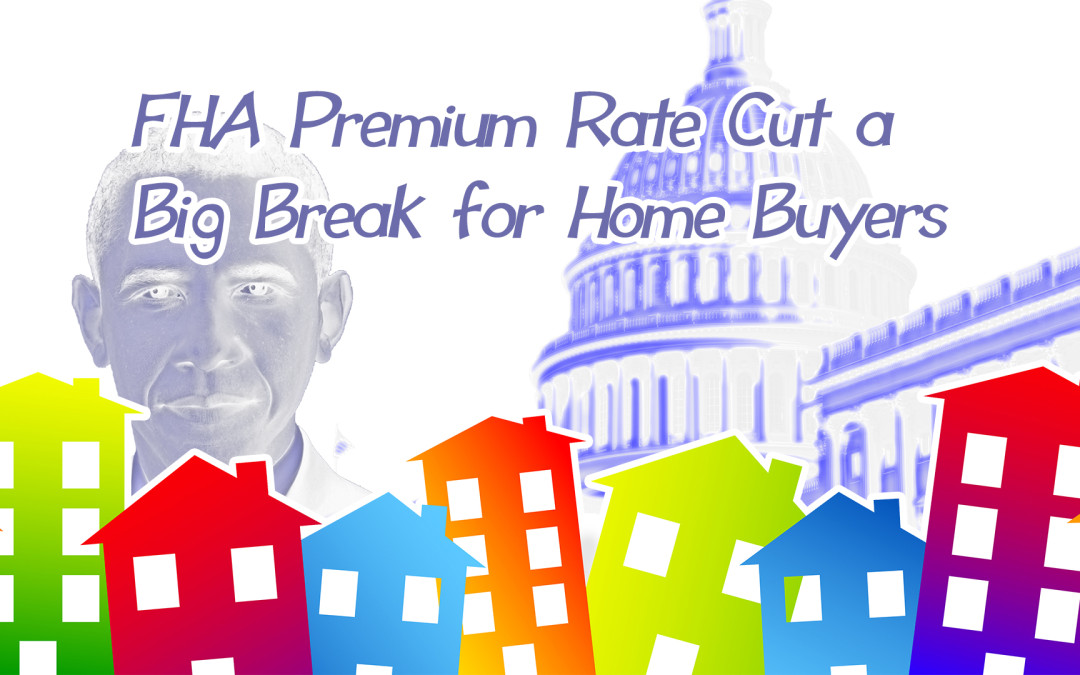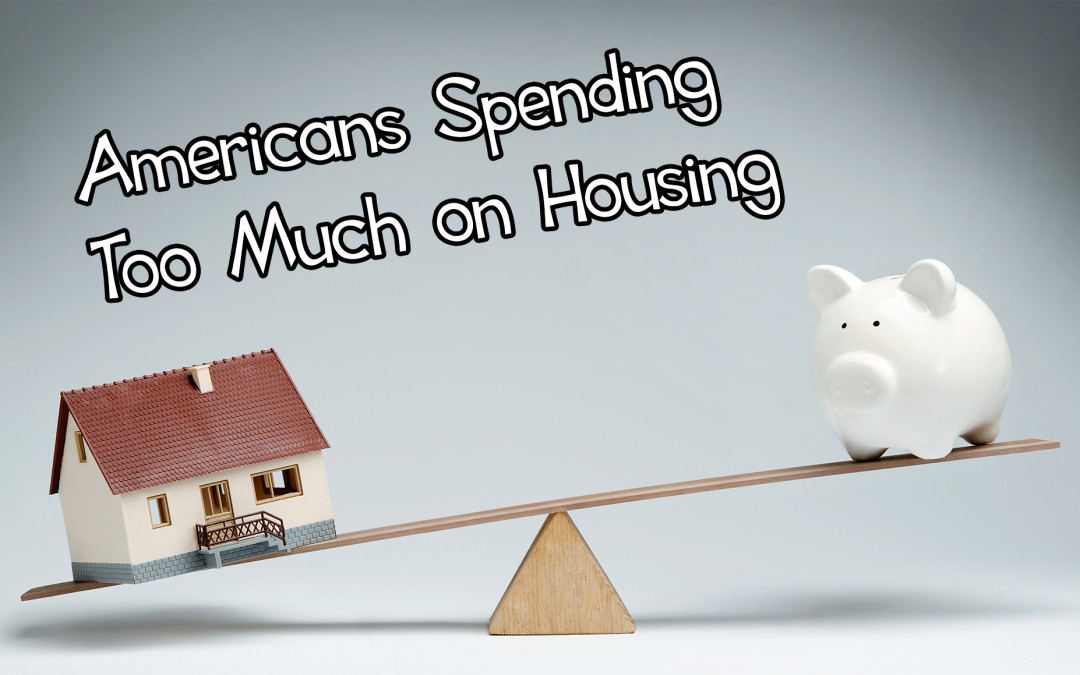
by rtdosen | Jan 17, 2015 | Ryan Dosen Real Estate Articles
FHA Premium Rate Cut a Big Break for Home Buyers By Ryan Dosen President Obama unveiled a plan earlier this week designed to help cash-strapped home buyers hop into the housing market. The Federal Housing Administration (“FHA”), a mortgage insurer and government agency within the U.S. Department of Housing and Urban Development (“HUD”), will be cutting insurance premiums in the near future, opening the doors for more people to buy homes as we approach the spring home buying season. The FHA The FHA is the largest insurer of mortgages in the world. According to its website, the “FHA insures mortgages on single family and multifamily homes including manufactured homes and hospitals…. FHA mortgage insurance provides lenders with protection against losses as the result of homeowners defaulting on their mortgage loans.” The FHA says that it “is the only government agency that operates entirely from its self-generated income and costs the taxpayers nothing. The proceeds from the mortgage insurance paid by the homeowners are captured in an account that is used to operate the program entirely.” In truth, the FHA costs the taxpayers nothing—unless it needs to be bailed out by taxpayers—which happened in 2013, to the tune of $1.7 billion. The 2013 bailout was the first in the agency’s 80 years of existence. FHA loan programs are designed to help individuals that may not meet conventional loan lending standards. FHA home loans are available with down payments as small as 3.5 percent. FHA loan programs also are generally available to people with lower credit scores. The FHA’s website says that applicants are now required to have a...

by rtdosen | Jan 6, 2015 | Ryan Dosen Real Estate Articles
Tips for Saving on Closing Costs By Ryan Dosen 2014 was somewhat of a strange year in real estate. The housing market was expected to continue its 2013 climb. Interest rates were expected to follow suit. And then we hit a brutal winter wall. Whether it was the weather, underlying market weakness, unstable world economic conditions, or any number of possible factors, the market came out of the gates like a slug and never really reached the levels we had expected. The rosy-colored-glasses view of things would say that all of those people that were expected to buy in 2014 still have relatively low interest rates and plenty of opportunity in 2015. The authorities are also reporting some of the highest post-recession consumer confidence numbers we’ve seen. Bolstering this rosy-colored view of the market, we are seeing a great deal of activity—far more than that from this time last year—in both the new construction and existing home markets. Speaking with other agents and builders in the area, December was the busiest we’ve had in years and we are expecting a strong year for real estate. In preparation for what we hope will be a busy year for the real estate market, I sat down with local mortgage expert Joe Gonzalez of GMH Mortgage of Conshohocken, PA to discuss some ways people can help save on the closing costs for their new home purchases. Tip 1: Consider a “Seller Assist” with Closing Costs Closing costs, including transfer taxes, title insurance, document recording fees, lender fees, and more, can add 3 to 4 percent of the value of a home...

by rtdosen | Dec 19, 2014 | Ryan Dosen Real Estate Articles
Holiday Home Wish List By Ryan Dosen Many of us will be hard at work this week fulfilling holiday wish lists. Lots of gifts to buy. Not a lot of time left to get them. And when we think about holiday wish lists, we’re usually contemplating things like cookware, cologne, and clothes. We may not think of home enhancements as things we should be longing for in lieu of other holiday luxuries, but these improvements can be enjoyed now and also pay dividends when it comes time to sell. The Demand Institute recently released the results of a 10,000-household survey that outlined the top items on Americans’ home wish lists. Detailing the so-called “Satisfaction Gap,” the Demand Institute helped shine some light on the gap “between what Americans have and what they say they need or want” in their homes. 1. Energy Efficiency Energy efficiency is becoming increasingly important to Americans and it tops our home holiday wish list. The Demand Institute reports that the average household spending on home electricity has jumped 56 percent since 2000. With energy cost increases far outpacing wage growth, the Institute says that “a desire for energy efficiency will drive renovations, maintenance, and new technology use….” 71 percent of surveyed households felt that having a “very energy efficient” home “with low monthly utility costs” was important, while only 35 percent of people responded that they were satisfied with their home’s current energy efficiency. This 36 percent “Satisfaction Gap” was the largest revealed in the survey. Whether it means installing programmable thermostats, replacing old appliances, sealing leaks, or simply changing their energy...

by rtdosen | Dec 16, 2014 | Ryan Dosen Real Estate Articles
3 Percent Down Conventional Home Loan Financing for First-Time Home Buyers By Ryan Dosen Cash-strapped first-time home buyers caught a big break this week. Fannie Mae and Freddie Mac announced that they are adopting programs that will allow first-time home buyers to put as little as 3 percent down towards the purchase of a home. Similar programs are offered through the FHA, but the backing of Fannie Mae and Freddie Mac will make the terms much more favorable for well-qualified first-timers. This new 97 percent loan-to-value program officially becomes available on December 13, 2014. “First-Time” Home Buyers? Government-sponsored enterprises (GSEs) Fannie Mae and Freddie Mac are allowing “first-time” home buyers to qualify for their new 3 percent down programs. Fannie and Freddie define “first-time” home buyer as someone that has not owned a home in the last three years. So, you may qualify as a “first-time” home buyer even if you’ve previously owned a home. Fannie Mae will also let you qualify as “first-time” home buyers if one, but not both buyers qualify as a first-timer. Conventional Loans and Financing Fannie Mae and Freddie Mac’s new 97 percent loan-to-value program (the previous max was 95 percent loan-to-value) is only for conforming or conventional loans. Fannie and Freddie set various standards for loans that they will back or buy from banks. Loans that meet these standards are considered conforming or conventional. When a bank issues a loan, it can keep the loan on its own books or potentially package the loan with other loans and sell them off. The selling off of loans enables banks to stay...

by rtdosen | Dec 5, 2014 | Ryan Dosen Real Estate Articles
Americans Spending Too Much on Housing By Ryan Dosen CNNMoney.com recently reported that too many Americans are spending too much of their money on housing. Some are stretching their dollars to get the nicest homes they can possibly afford. Others are struggling with low wages, underemployment, bad credit, and/or high rental costs that could be unsustainable, individually and societally. 40 Million “Cost Burdened” Americans The Demand Institute, a non-advocacy and non-profit division of The Conference Board, is a think tank that focuses on understanding how consumer demand changes in industries, countries, and markets. The Institute recently surveyed 10,000 U.S. households and found that nearly 40 million Americans are spending more than 30 percent of their income on housing payments, property taxes and other home expenses. Even worse, 49 percent of renters are finding themselves in this “cost burdened” zone. Another study released this summer by Harvard’s Joint Center for Housing Study reported that housing costs are near record highs and that 28 percent of renters are “severely” cost-burdened with housing costs eating up at least half of their incomes. Debt-to-Income Ratios When qualifying you for a loan to purchase a home, a bank will look at your debt-to-income (DTI) ratios. There are two DTI ratios that are relevant when trying to qualify for a mortgage: front-end ratio and back-end ratio. Local mortgage expert Karen Jackson of Waterstone Mortgage in West Chester says that the front-end ratio is the percentage of monthly gross income that is taken up by just the new projected monthly “PITI” (principal, interest, taxes, and insurance) payment. The back-end ratio is the percentage taken...

by rtdosen | Nov 26, 2014 | Ryan Dosen Real Estate Articles
Code Concerns Can’t Cool Builder Expectations By Ryan Dosen Builders, faced with increasing costs and stricter building codes, remain optimistic about the future and the demand for their product. The National Association of Home Builders (NAHB) just reported a Housing Market Index (HMI) of 58—the second highest monthly reading in 9 years. Despite their optimistic mindset, some builders still feel the walls closing in with the onset of high-cost, low-return code mandates. Stricter Building Codes Paul Emrath of the NAHB wrote that “originally, building codes were designed to establish minimum safety standards for newly built structures, but codes have increasingly been seen as a tool for advancing other public policies, such as energy efficiency.” Emrath says that this trend is causing builders to become concerned about some of the code changes increasing costs “substantially, as well as needlessly.” The NAHB/Wells Fargo Housing Market Index polls home builders every month to gauge their sentiment for the housing market. October’s HMI survey asked builders a new question: “How concerned are you about building codes becoming too stringent and driving up costs without a measurable improvement in safety or other benefits.” Builders were asked to respond on a scale of 1 to 5, with 1 being “not concerned at all” and 5 being “extremely concerned”. 35 percent of surveyed NAHB members responded to October’s new survey question by stating that they were “extremely concerned” about building codes overall becoming “too stringent and driving up costs without a measureable improvement in safety or other benefits.” Only 6 percent of surveyed home builders reported that they were not concerned at all. 58 percent of...








Recent Comments